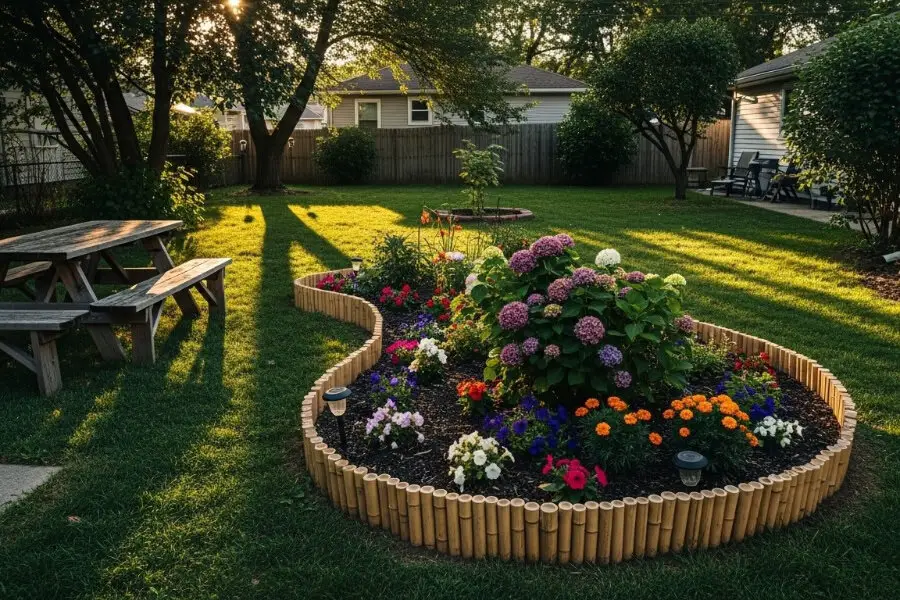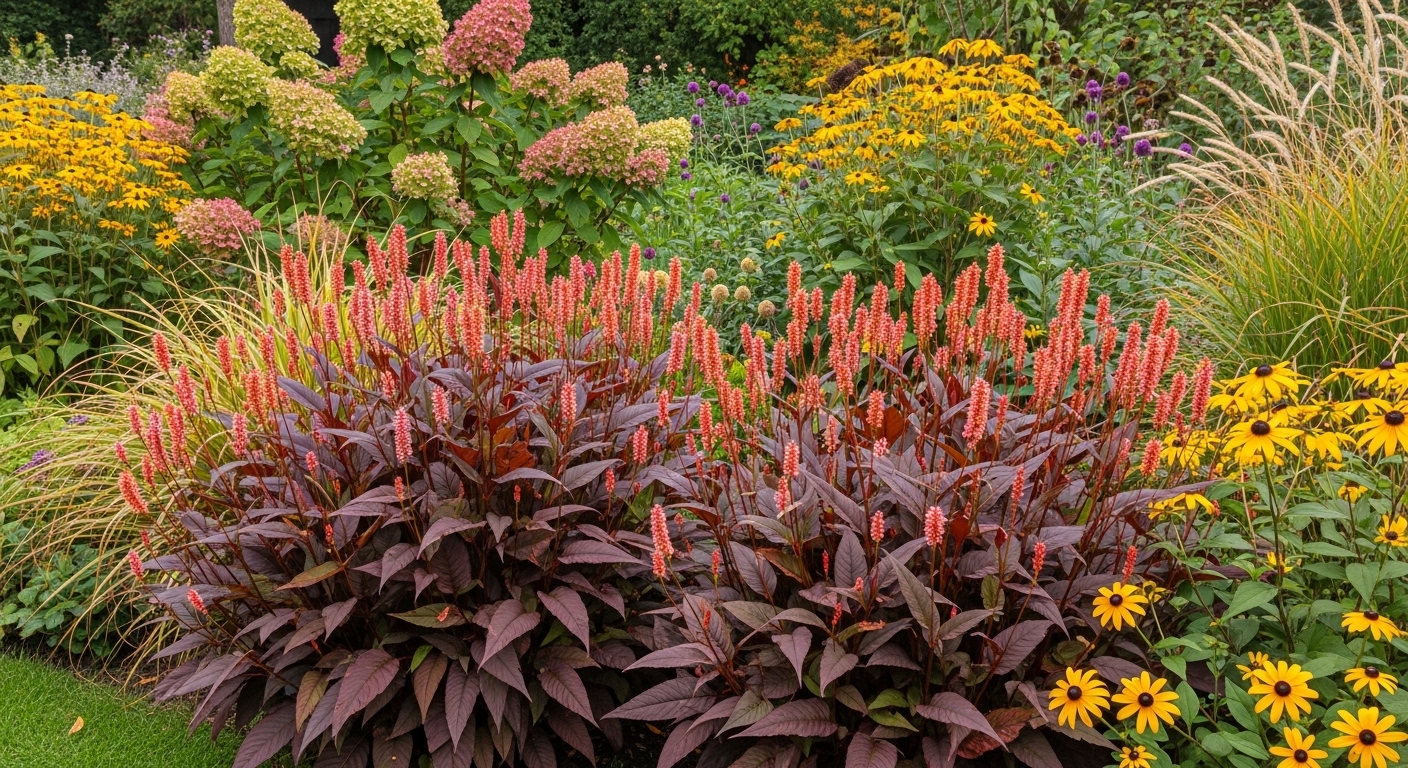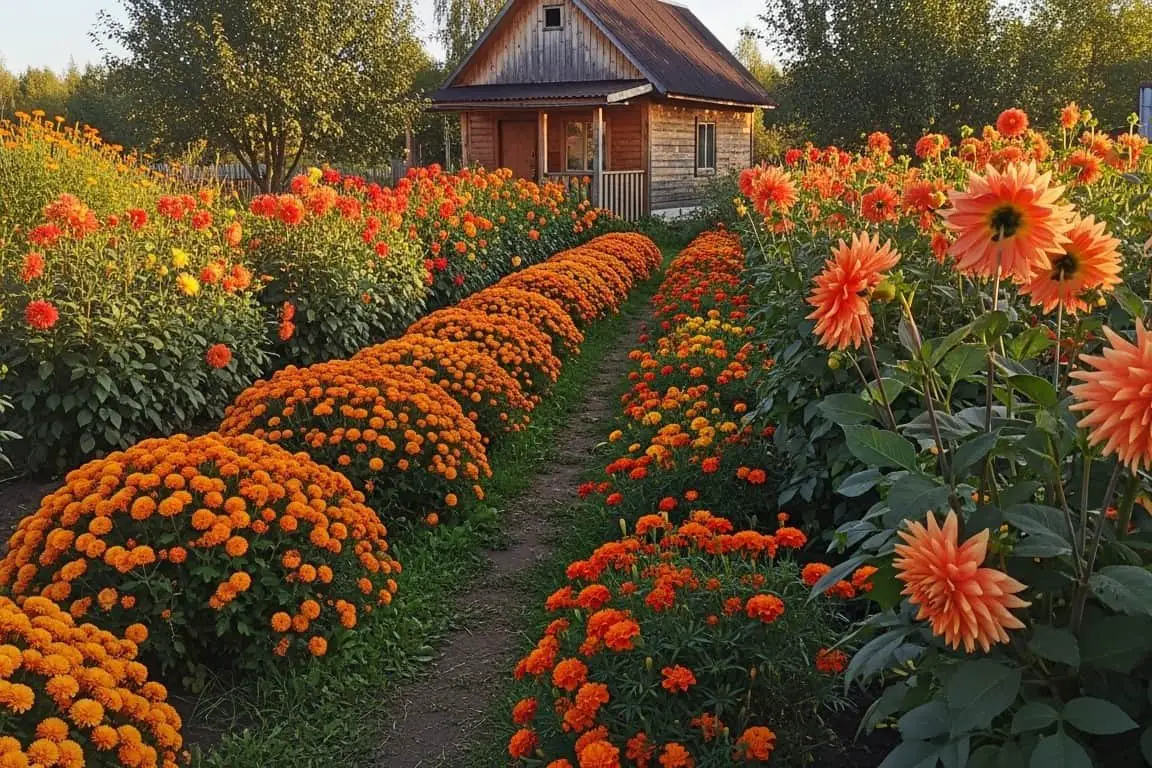Growing perennials can be tricky at times. Waiting years for blooms or dealing with pesky pests can feel frustrating. After trying different solutions, I found some simple ways to handle these challenges.
Stick around to learn a few tips that can make your gardening journey a bit easier!
Contents
- 1 Slow to show results
- 2 Hard to change the layout
- 3 Physically demanding
- 4 Persistent pests and diseases
- 5 Ongoing maintenance
- 6 Taking up space long-term
- 7 Growth can get out of control
- 8 Dividing and sharing is tough
- 9 Weather unpredictability
- 10 Hard to keep track
- 11 Overgrown garden look
- 12 Less variety and “newness”
- 13 Unsightly dieback at season’s end
- 14 Allergies or unwanted visitors
- 15 Emotional attachment and loss
- 16 Conclusion
- 17 FAQs
Slow to show results
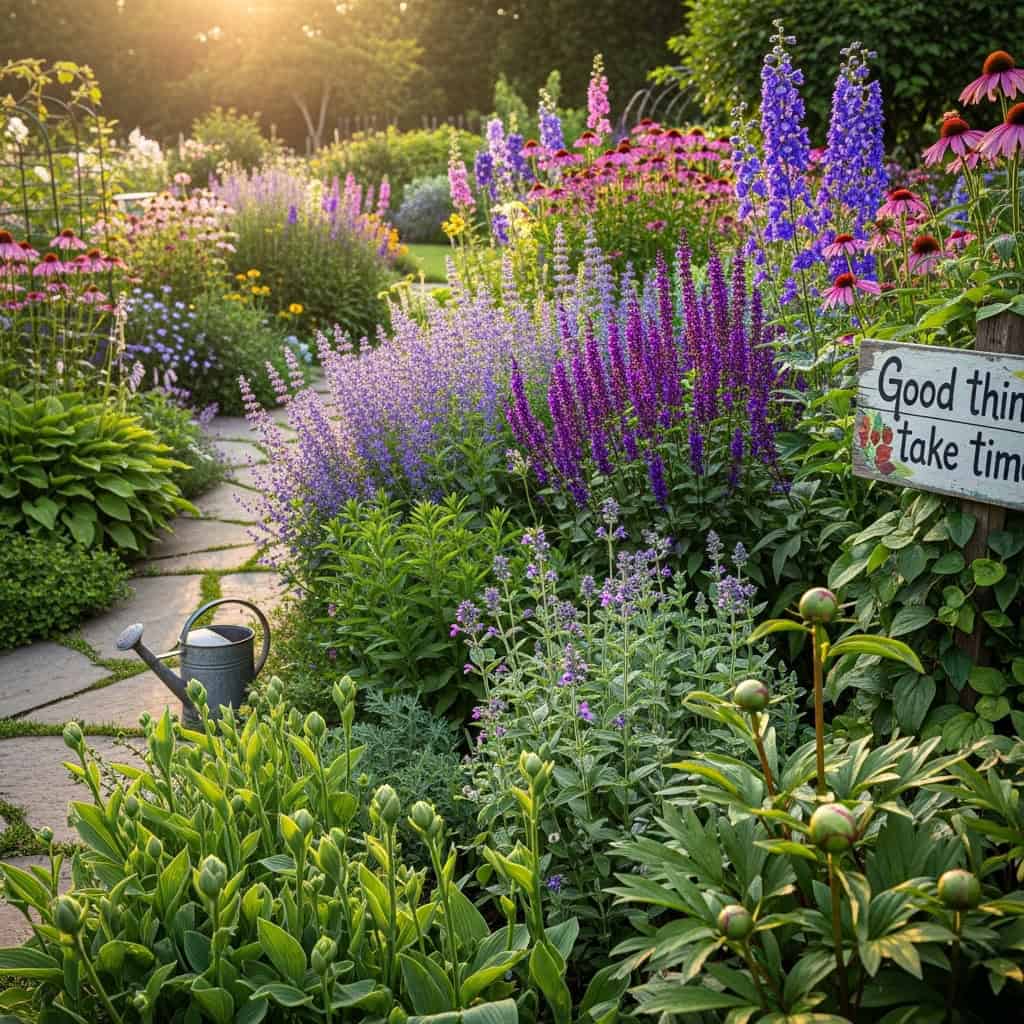
Some perennials test your patience—they take a while to shine. But the wait? Totally worth it for those lush blooms!
Challenge: Many take 2–3 years to mature.
Perennials can test your patience. Many need 2–3 years to mature fully. In those early years, they might not bloom much or look very lush. It feels slow, especially if you’re eager for quick results.
To fill the gap, I like planting fast-growing annuals nearby. They add instant color while my perennials settle in and grow stronger roots. This keeps the garden lively without feeling empty!
Tip: Add annuals for quick color.
I love how annuals brighten up space while waiting for perennials to mature. They grow fast and fill gaps with vibrant blooms. Marigolds, petunias, or zinnias are great choices because they flower quickly and need little care.
Adding them also keeps the garden lively through different seasons. I like grouping colors to match my mood or theme each year. Planting annuals around slow-growing perennials brings balance and adds charm without much extra work.
Hard to change the layout
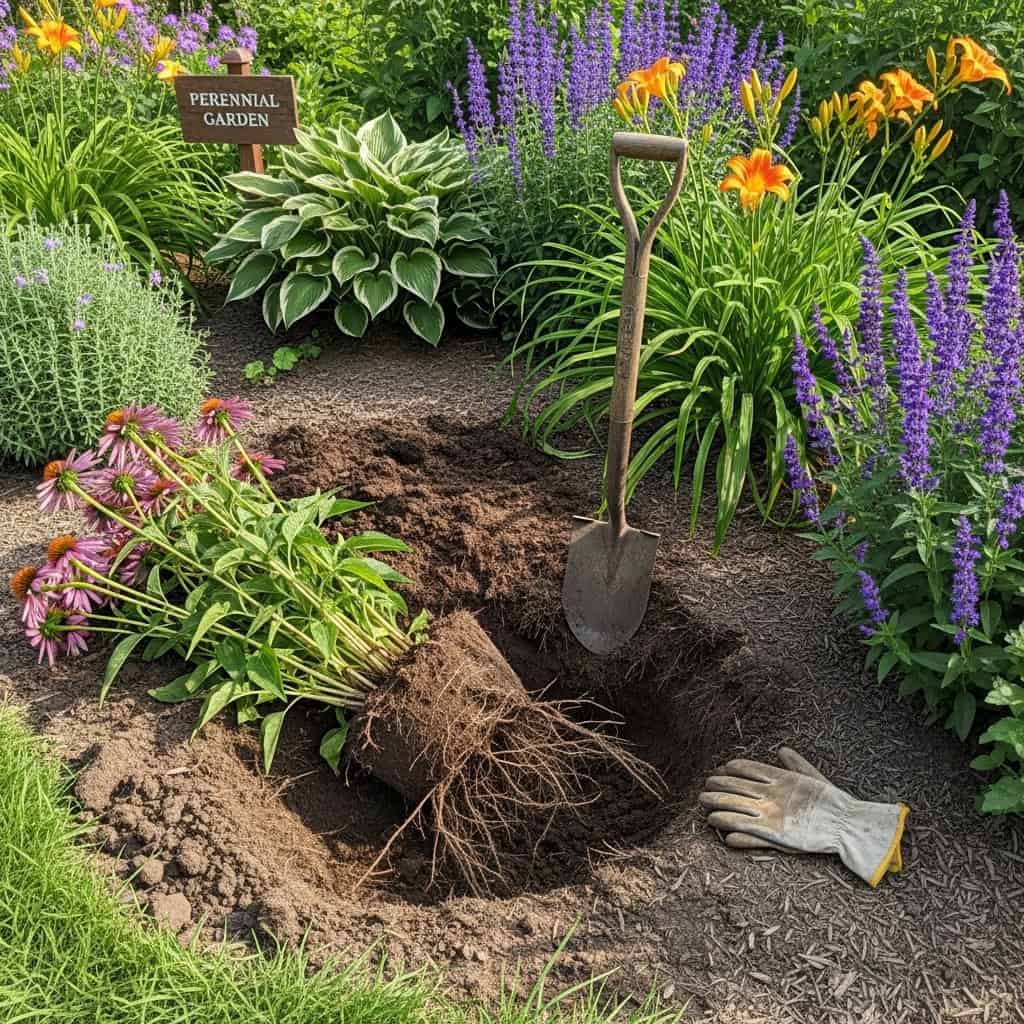
Changing your garden’s layout can be a huge challenge. Deep roots make it tricky to move plants once they’re settled.
Challenge: Deep roots make moving tough.
Moving perennials with deep roots feels like a workout. Some plants, like peonies or daylilies, dig their roots deep into the soil. This makes it harder to lift them without damage.
I use containers or raised beds for these stubborn growers. It gives me more control over placement and space. If I need to move one planted in the ground, I water it well first to loosen the dirt around its roots.
A sharp spade also helps slice through tough spots cleanly!
Tip: Use containers or raised beds for flexibility.
I use containers to keep my garden flexible. They let me move plants around easily and test different spots for sunlight or shade.
Raised beds also help a lot! They make digging simpler and control soil quality. Plus, it’s easier on my back when I’m planting or weeding.
Physically demanding

Gardening can be tough on the body—your back and knees feel it the most. Stiff soil or tangled roots make digging even harder.
Challenge: Digging and pruning strain back and joints.
Digging deep holes or cutting thick branches can hurt muscles fast. My back and knees used to ache badly after working in the garden for hours. Long-handled tools helped me avoid so much bending, which saved both time and pain.
Raised beds make a big difference too. They let me work without crouching low or stretching too far. I also use soft knee pads when weeding or trimming ground-level plants like hostas.
These tweaks keep my body happier during garden tasks!
Tip: Use long-handled tools, knee pads, and raised beds.
Gardening can be hard on the body. I always keep long-handled tools handy to avoid bending too much. They make pruning and digging easier without hurting my back.
Raised beds are a blessing, especially for those with sore knees or limited mobility. Adding some knee pads makes kneeling softer and less painful when working close to plants. It’s all about making tasks less tiring!
Persistent pests and diseases
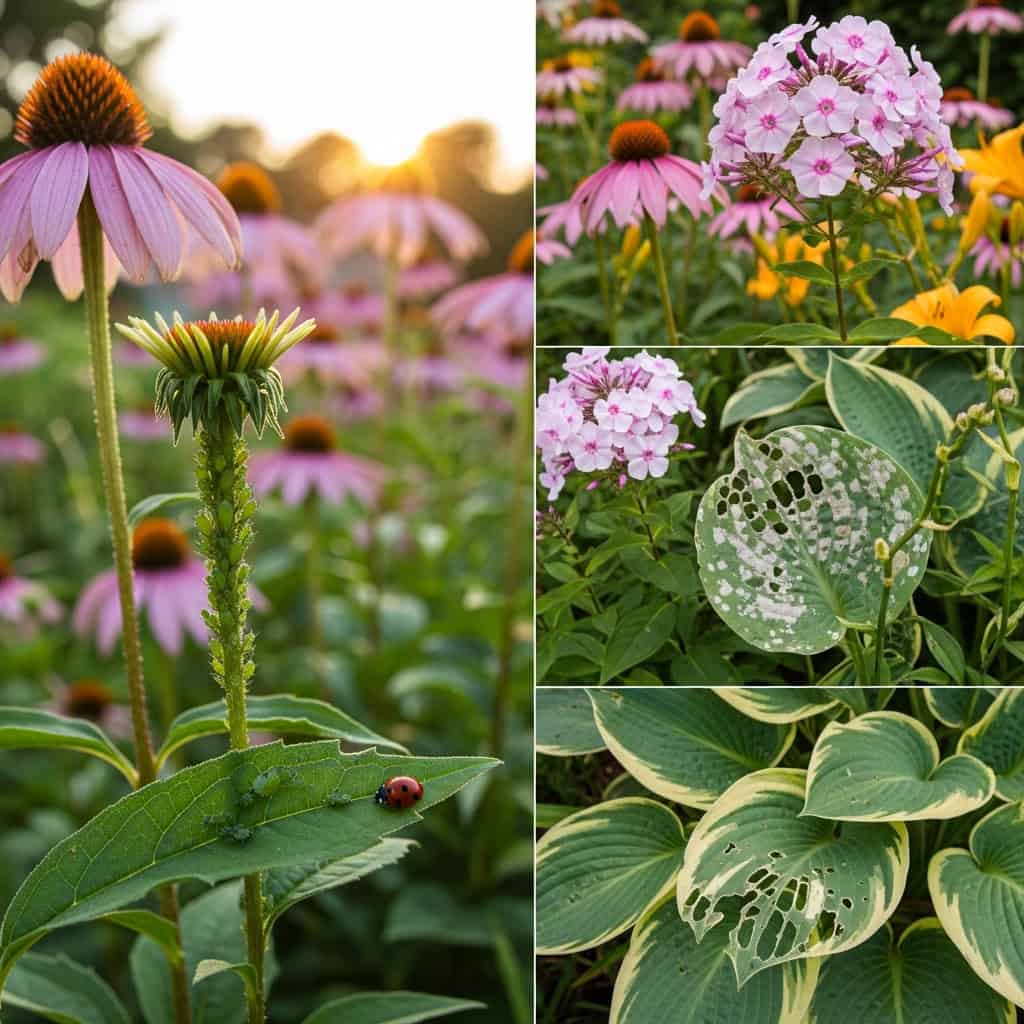
Pests and diseases can really test your patience. They seem to come back just when you think you’ve won the battle!
Challenge: Problems can return year after year.
Some pests and diseases never fully go away. They hide in the soil or on plants, coming back to cause trouble each year. I’ve noticed this with aphids, rust, and powdery mildew in my garden.
I pick hardy plants like echinacea or daylilies to resist these problems. Mulching helps too by keeping moisture steady and blocking weeds that harbor pests. Organic sprays also work well; neem oil is one of my favorites.
Keeping the garden clean during fall stops many issues before they spread again next spring!
Tip: Pick hardy varieties like echinacea or daylilies, refresh mulch, use organic sprays.
I always choose tough plants like echinacea or daylilies. They handle pests and weather better than most. These hardy options save time and energy in the long run.
I also refresh mulch every season. It keeps weeds down, soil moist, and roots healthy. For bugs or diseases, I use organic sprays. They are safer for the garden and the environment!
Ongoing maintenance
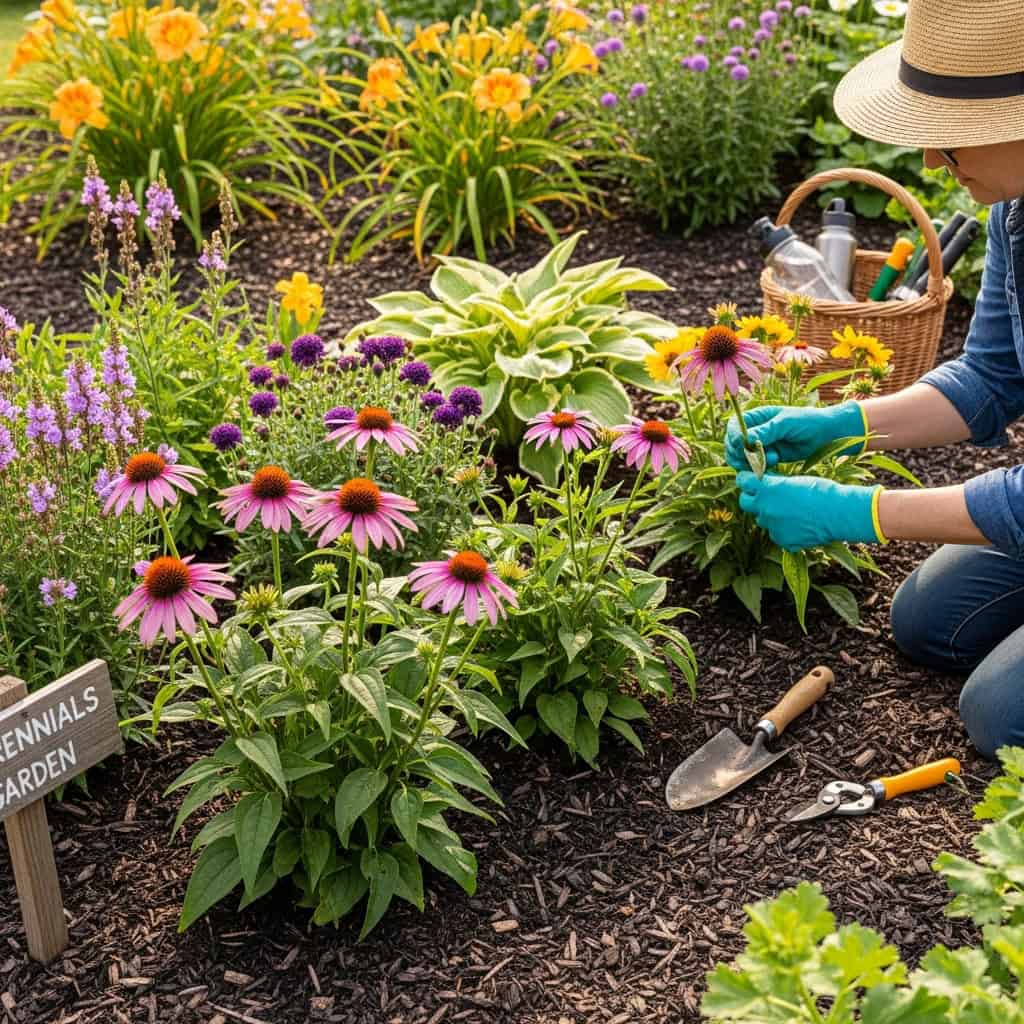
Caring for perennials takes time and effort. They need regular attention to stay healthy and look their best.
Challenge: Still need pruning, feeding, and winter care.
Perennials may come back, but they need help to thrive. I prune dead stems and leaves in early spring or late fall. This keeps them looking neat and healthy.
Feeding is just as important. I add compost or slow-release fertilizer each season for strong growth. For winter care, mulching protects roots from frost and harsh weather. It’s simple steps like these that keep my plants happy year-round!
Tip: Favor easy-care plants such as hosta, peonies, sedum.
I always go for plants like hosta, peonies, and sedum in my garden. They don’t ask for much! Hosta thrives in shade and adds lush green leaves. Peonies bloom beautifully every year with just a bit of sun.
Sedum handles heat well and stays cheerful without constant care.
These plants reduce my workload during the busy season. I spend less time watering or fighting pests since they’re sturdy choices. Plus, they bring bold colors and textures without needing fancy tools or tricks.
This makes gardening feel more like fun than work!
Taking up space long-term
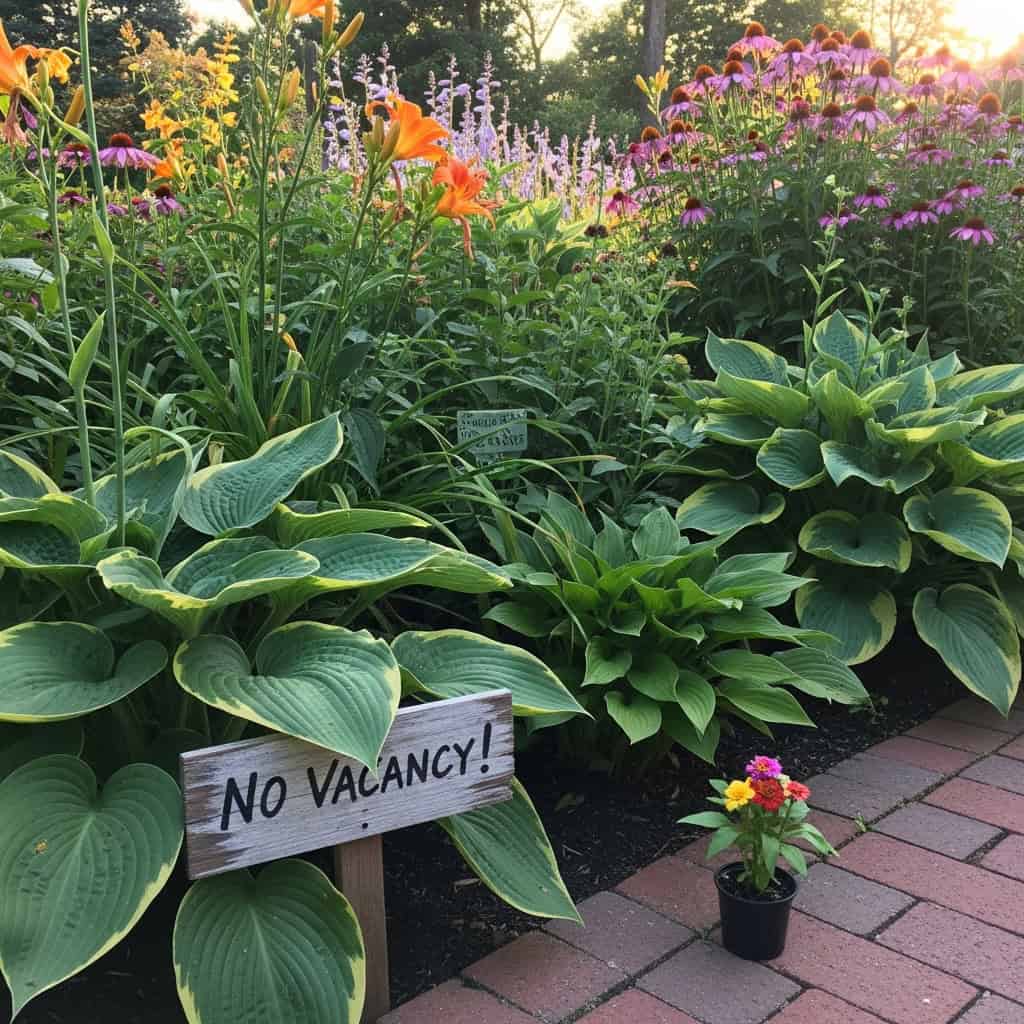
Perennials settle in and claim their spot for years. This limits space for experimenting with new plants or fresh ideas.
Challenge: Beds stay occupied for years.
Plants with deep roots often claim their space for years. This makes it tricky to try new layouts or add fresh plants without major digging.
I like keeping a small patch open just for experiments. New flowers or herbs can go there, leaving the rest of the garden undisturbed. It’s a fun way to stay creative while letting established plants thrive.
Tip: Keep a small patch for new trials.
I like having a corner of my garden for testing new plants. It keeps things exciting without disturbing the main beds. A small area works well to try different colors, shapes, or varieties.
This spot helps me learn what grows best in my soil and climate. If a plant doesn’t work out, it’s no big deal. The rest of the garden stays neat while I experiment with something fresh!
Growth can get out of control
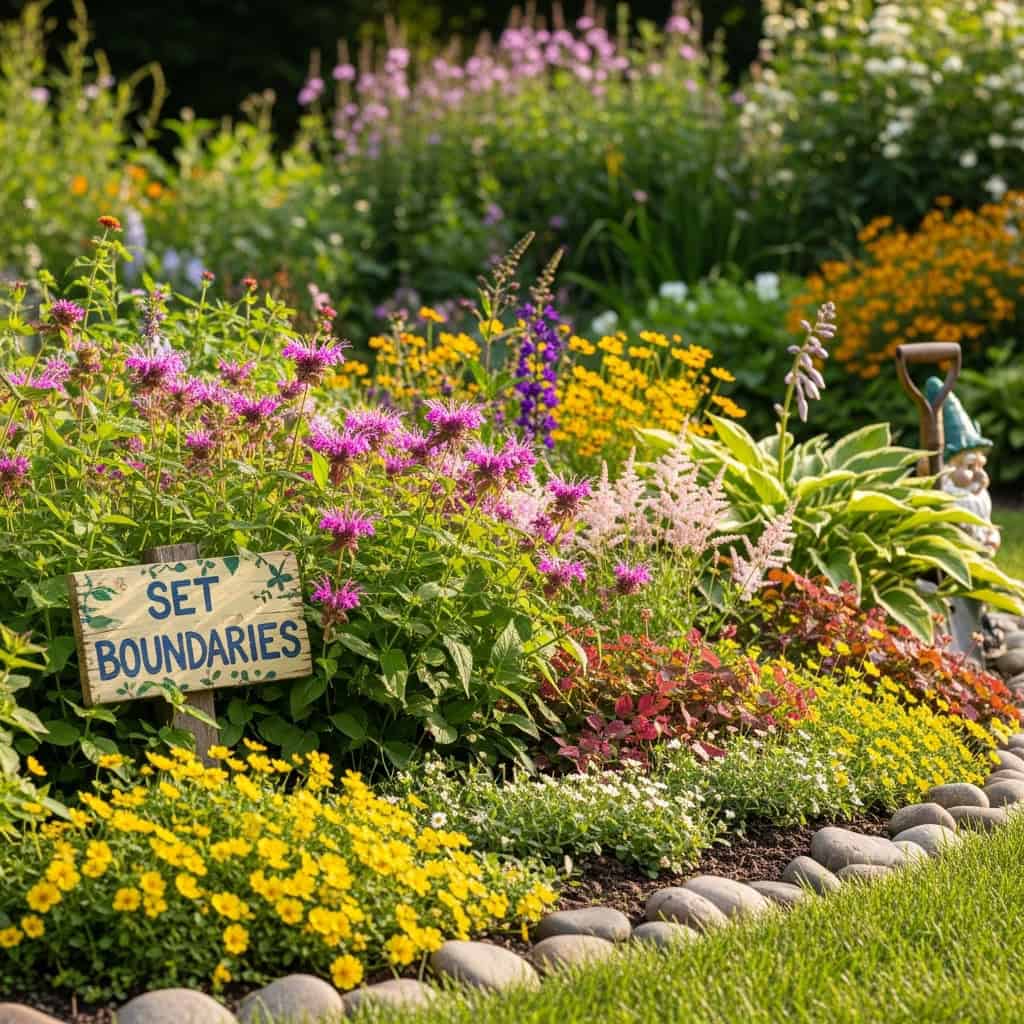
Some plants grow fast and take over their neighbors—pretty wild, right? It’s good to set boundaries early, so your garden stays neat.
Challenge: Some spread and crowd neighbors.
Plants like mint and black-eyed Susans can take over. They push into other spaces and choke nearby plants.
I use edging to keep them in check. Sometimes, I grow aggressive plants in buried pots. Compact growers, like peonies, are also a great choice for control.
Tip: Use edging, buried pots, or compact growers like peonies.
Edging keeps spreading plants in check. I use simple borders like stones or plastic strips. They stop roots from taking over nearby areas.
For aggressive growers, buried pots work great. I sink the pot into the soil to block roots from spreading too far. Compact plants, like peonies, are another easy option. They stay neat and don’t crowd other flowers.
These tricks save space and cut maintenance time!
Dividing and sharing is tough

Splitting plants can feel like a workout—you’ll need some muscle and patience. But hey, it’s a great excuse to invite friends over for help (and fun)!
Challenge: Splitting clumps takes effort.
Breaking apart clumps of perennials can be hard work. Thick roots need strong hands and sharp tools to cut through. Some plants, like daylilies and hostas, grow tightly packed over the years.
I like to make this task fun by inviting friends to help. We share laughs while dividing plants (and sometimes swap extras). A sturdy spade or garden fork makes lifting easier. Working after rain softens the soil helps too!
I like inviting friends to help with gardening. It makes the work lighter and more fun. We chat, laugh, and share plant tips while dividing clumps or planting new flowers.
Afterward, I serve snacks and drinks in the garden. It feels rewarding to enjoy the space together after working on it as a team!
Weather unpredictability

Weather can be tricky—it’s always changing and keeps you guessing. Some plants just aren’t built to survive surprise frosts or heatwaves.
Challenge: Heat or cold can kill long-cared plants.
Extreme weather can wreak havoc on perennials. High heat dries soil fast, stressing roots and leaves. Frost damages tender shoots or kills plants outright.
I protect my garden with a few tricks. Mulch locks in moisture during hot spells. A layer of straw or cloth shields against frost at night. Native perennials handle these swings better, so I stick to hardy choices like black-eyed Susan or coneflowers for peace of mind.
Tip: Choose native perennials for resilience.
I always pick native perennials for my garden. They handle the local weather much better. These plants are used to the soil, pests, and seasons where I live.
For example, I’ve planted black-eyed Susans and purple coneflowers before. Both grew strong without much care. Native choices save time on pest control and watering too!
Hard to keep track
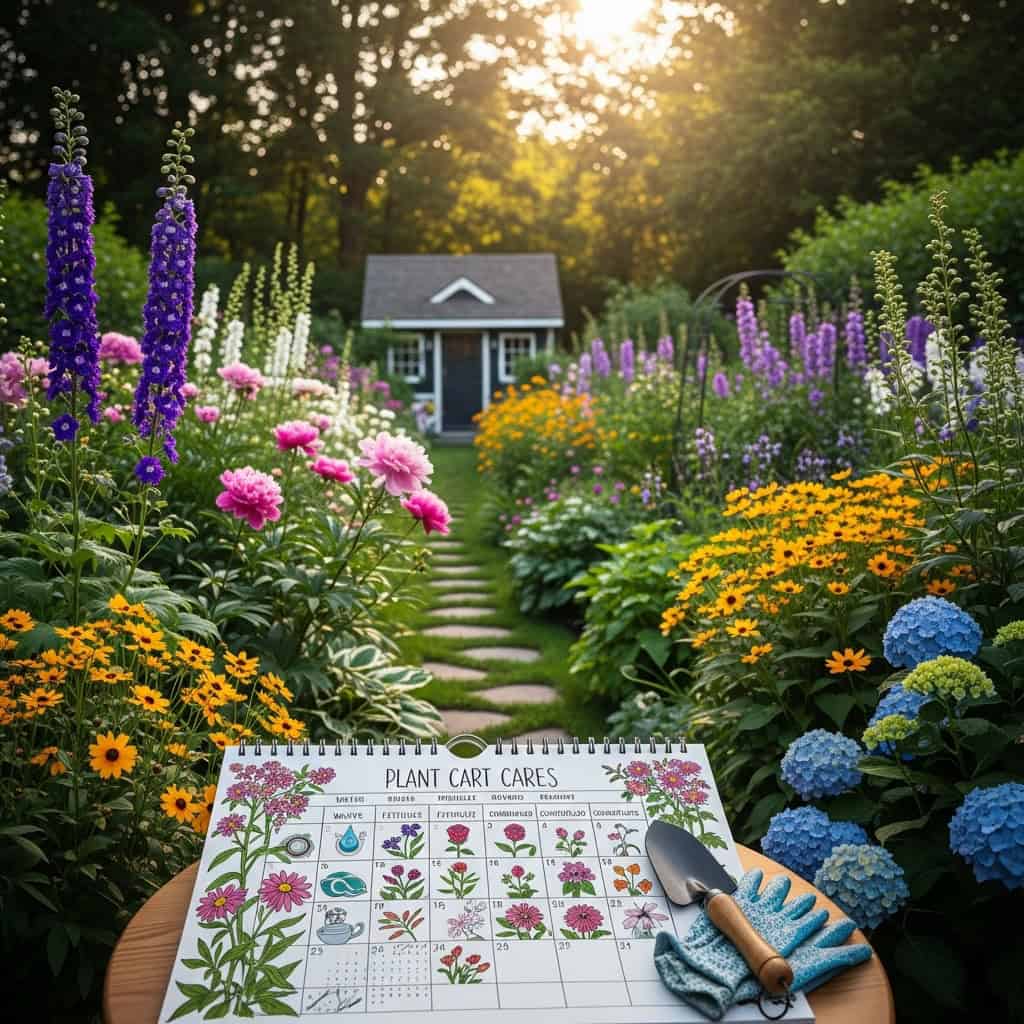
Plants can be sneaky—each one has its own needs, and it’s easy to forget. A little planning goes a long way in staying organized!
Challenge: Each plant has its own care schedule.
Every perennial has its own needs. One might need water daily, while another prefers dry soil. Some want pruning in spring; others in fall.
I keep a garden journal to manage this. I jot down watering schedules, feeding times, and bloom periods. Simple notes make life easier!
Tip: Keep a simple garden journal.
I jot down notes about my plants in a small notebook. I track blooming times, feeding schedules, and pest problems. It helps me stay organized without effort.
A quick sketch of the garden layout also goes in there. I add reminders for pruning or dividing clumps next season. This little journal saves me time and trouble!
Overgrown garden look
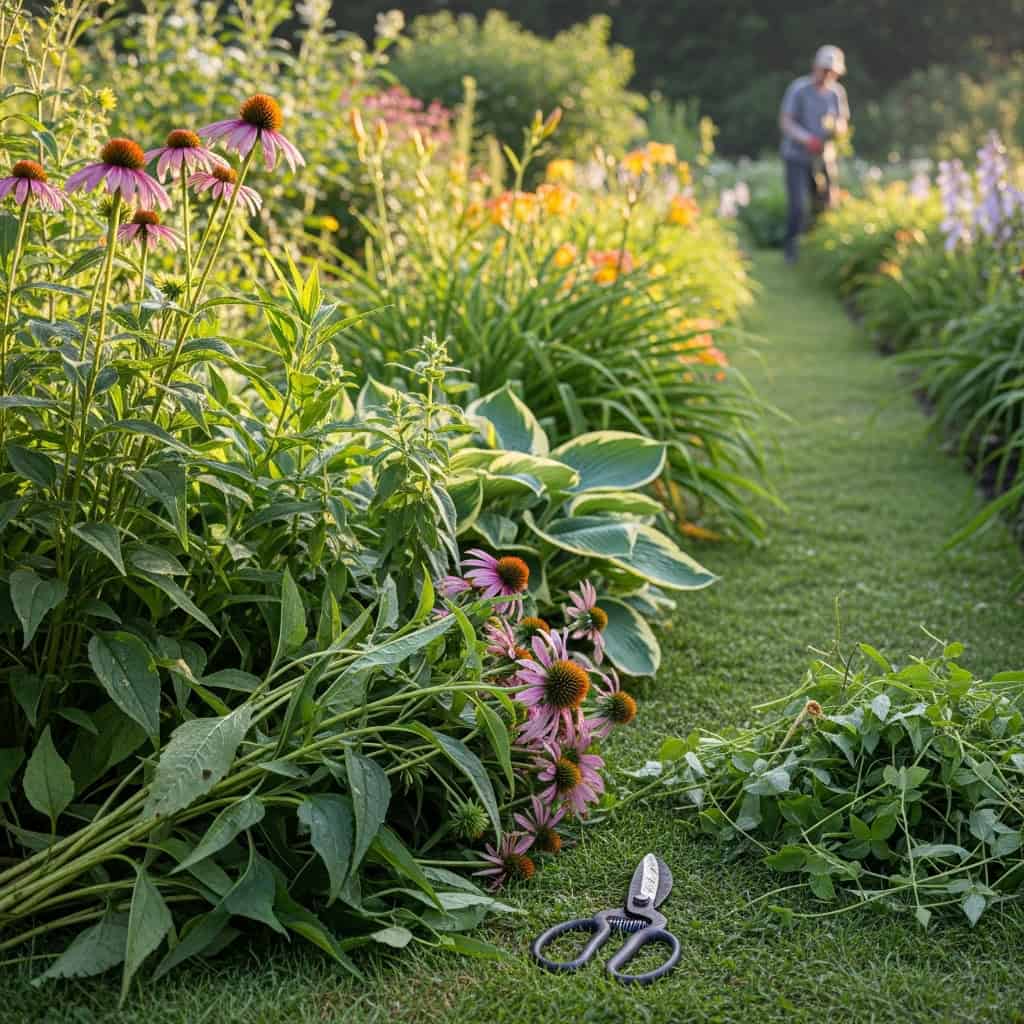
Crowded plants can make your garden feel messy fast. Spacing and regular trimming keep things neat but still natural.
Challenge: Beds get crowded and messy.
Plants can grow fast and take over. Weeds sneak in too, making the bed messy. Some plants block others from sunlight or space, which isn’t good for growth.
I like to plan my garden layout carefully. I leave enough room between each plant. Pruning helps keep things tidy and under control. Adding mulch reduces weeds and keeps it looking neat longer.
Tip: Map plantings, space generously, prune often.
I always sketch my garden plan before planting. It helps me see where each perennial goes and prevents overcrowding. Giving plants plenty of room lets air circulate, keeping diseases away and allowing better growth.
I prune often to keep everything tidy and healthy. Trimming back overgrowth stops plants from choking each other out. Spaced-out beds look neat too, making the whole garden feel calm and inviting!
Less variety and “newness”
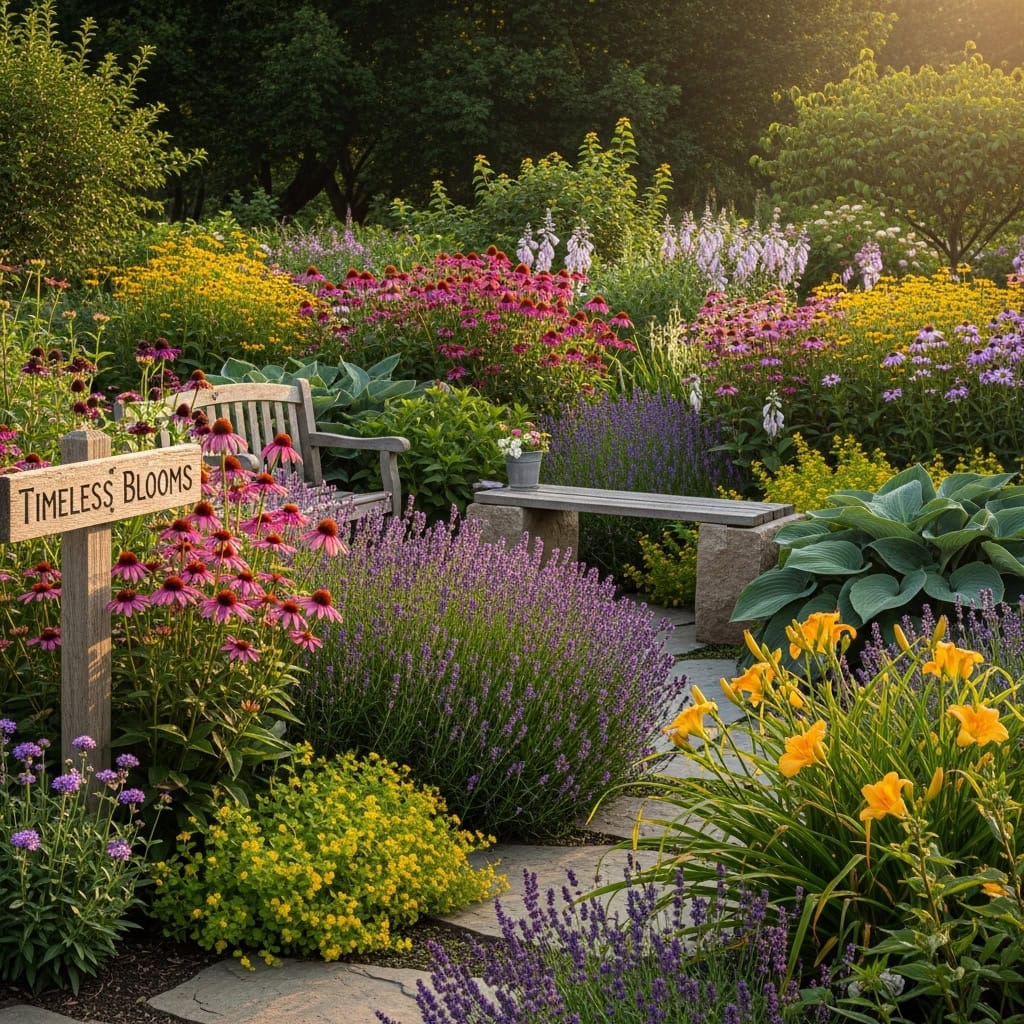
Perennials can feel a bit “same-old, same-old” after a while. It’s like seeing the same show every season—pretty, but predictable!
Challenge: Perennials look the same year after year.
Some perennials can feel repetitive. The same leaves, blooms, and shapes show up every season. This lack of change might make the garden less exciting over time.
I mix things up with colorful annuals or seasonal plants. They add surprise and freshness without major effort. Planting bulbs like tulips or daffodils also helps brighten early spring before perennials bloom again!
Tip: Add annuals for fresh seasonal color.
I like mixing annuals with my perennials. They give fresh color while the perennials take their time to grow. Plants like marigolds, petunias, or zinnias can brighten up spaces fast.
Adding them keeps the garden lively in every season. I tuck them between slower-growing plants for a full look all year round. It’s simple and makes such a difference!
Unsightly dieback at season’s end
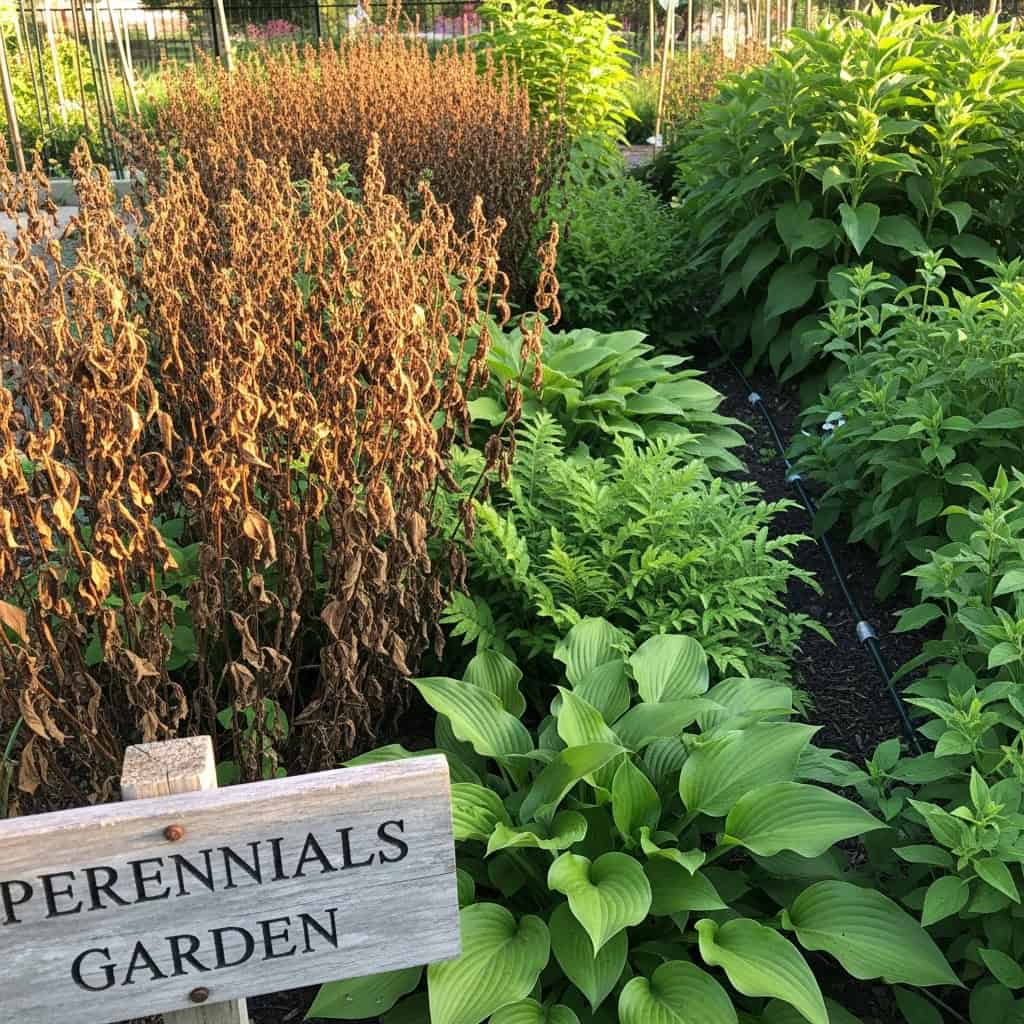
When plants dry up, it can make the garden look messy. Add greenery nearby to keep things looking neat and alive.
Challenge: Dry stalks and leaves look untidy.
Dry stalks and leaves can make the garden look messy. I trim them back as soon as they turn brown. Cutting early keeps things neat and tidy.
I also plant some evergreens or ground covers nearby. They hide the bare spots during winter or late fall. This trick keeps the space looking fresh year-round.
Tip: Pair with evergreens or ground covers.
Evergreens keep gardens lively in winter. I like adding them near perennials that fade after summer. Shrubs like boxwood or juniper work great for edges or blank spots.
Ground covers fill gaps fast and stop weeds. Creeping thyme or sweet woodruff spreads nicely without taking over. Both make beds neat and colorful all year long!
Allergies or unwanted visitors
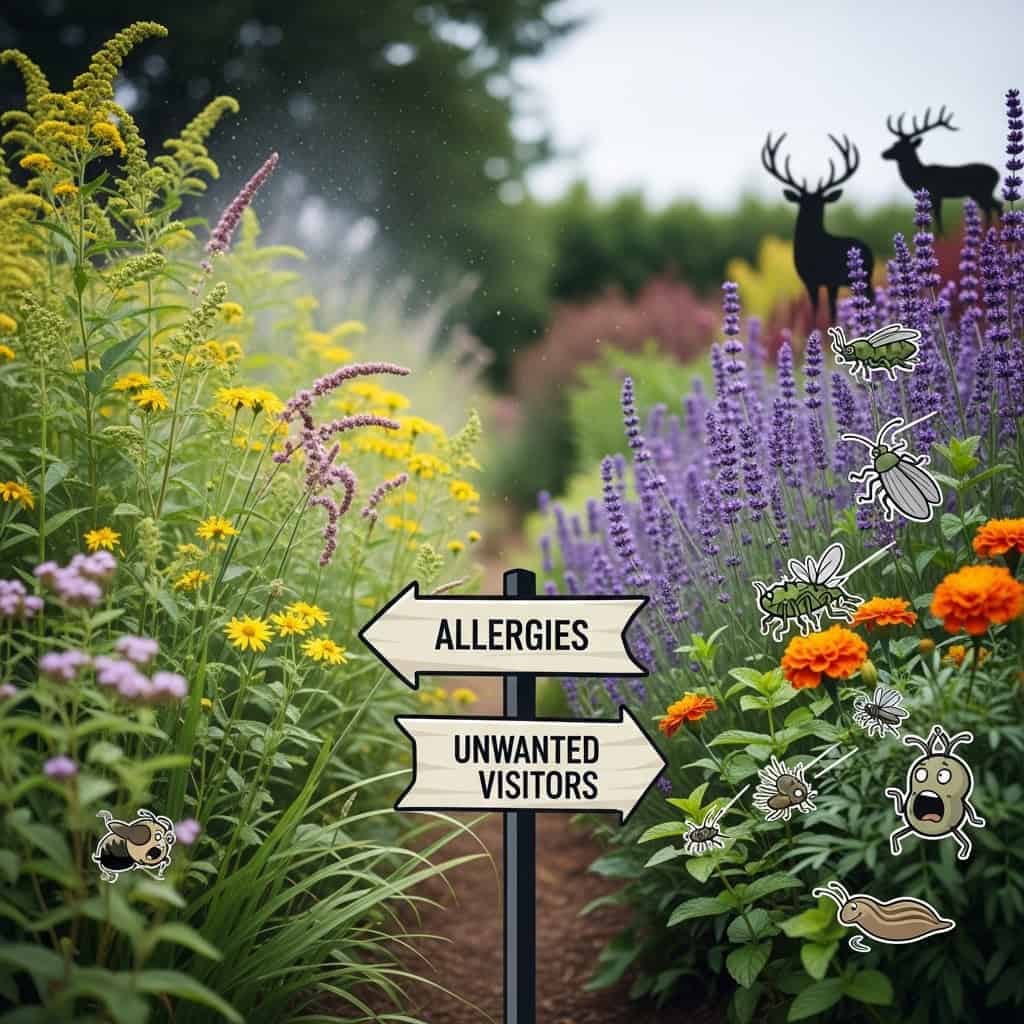
Some plants can bring sneezes or unwelcome bugs into your yard. Place these away from hangout spots and pick safer options to keep things comfy.
Challenge: Some attract bees, mosquitoes, or heavy pollen.
Certain perennials bring bees or mosquitoes too close for comfort. Heavy pollen from some plants can make allergies flare up fast. I always plant low-pollen types like astilbe or foxglove to avoid sneezing fits.
Bees and insects love flowers, but not every spot in my garden is ideal for them. I pick spots far from patios or seating areas for buzzing favorites like lavender. This keeps my relaxing spaces peaceful and bug-free!
Tip: Plant away from sitting areas, choose low-pollen types.
I always keep my seating areas free of high-pollen plants. It feels much better to relax without sneezing or itchy eyes ruining the moment. I pick low-pollen types like hostas, ferns, and begonias for nearby spots.
Mosquitoes and bees can also be a pain if they swarm close to seating spaces. I choose plants that don’t attract them, like marigolds or lavender. This makes sitting outside so much more peaceful!
Emotional attachment and loss
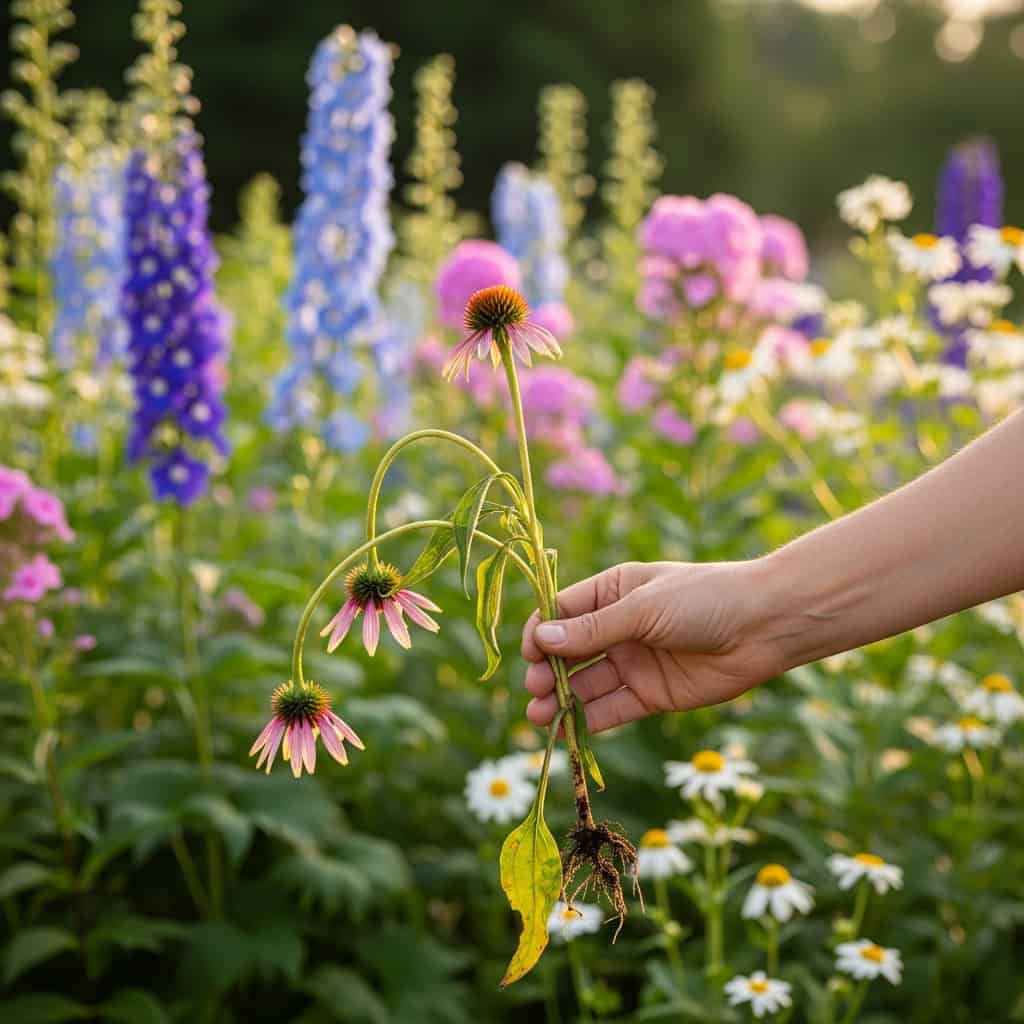
Gardening can tug on your heartstrings. Losing a plant feels like saying goodbye to an old friend, doesn’t it?
Challenge: Losing a plant after years of care is discouraging.
Losing a plant you’ve cared for can feel like losing a friend. It’s hard to watch something you nurtured fade away. Stress from pests, harsh weather, or disease often takes its toll over time.
I find comfort knowing it’s part of nature’s cycle. I like to take photos of my garden through the seasons. They remind me how much beauty that plant brought while it thrived. If one space opens up, I see it as a chance to try another perennial or add some fresh annuals for variety!
Tip: Accept it as part of the cycle, take photos, try something new.
Plants don’t always survive. It feels sad after years of care, but it’s normal in gardening. I take photos to capture their beauty and effort.
I also try a new plant or adjust the layout next season. This keeps my garden fresh and exciting. Gardening is about learning, not just growing!
Conclusion
Start small and enjoy learning as you go. Your garden will grow with care, patience, and a bit of experimenting!
Start with easy perennials (hosta, daylily, echinacea, peony).
I always pick easy perennials to begin. Hosta is great for shade and super low-maintenance. Daylilies bloom all summer, even in tough spots. Echinacea draws butterflies and thrives with little care.
Peonies add big flowers that return yearly without much fuss.
These plants handle pests well and need basic soil care. Mulch helps keep weeds down around them too. I love how they fill a garden with color while staying simple to manage!
Mix in annuals for variety.
Annuals brighten beds quickly. They add color while perennials take time to grow. I like zinnias, marigolds, and petunias for their bold hues.
They also fill empty spots. This keeps the garden alive all season long. Choose annuals that match your soil and sunlight for easy care.
Use raised beds to reduce strain.
Raised beds save my back and knees. They lift plants higher, so I bend less. The soil stays loose too because it’s not walked on. This makes digging easier.
I also like how they help with garden planning. I can control the size of the space better. It feels tidy and organized, which helps cut down on hard work later!
Keep a garden journal to simplify care.
I keep a small notebook for my garden. It helps me track what I plant, where I plant it, and how it grows. This keeps me from guessing later.
I jot down when I water, prune, or handle pests. It’s also useful for noting which plants thrive and which struggle. Over time, patterns emerge that make care easier.
FAQs
1. What are some common challenges of growing perennials?
Perennials can face issues like poor soil, pests, overcrowding, and inconsistent watering. These problems can make it hard for your plants to thrive.
2. How do I handle pests that damage my perennials?
You can use gentle solutions like natural sprays or companion planting to keep pests away without harming the environment.
3. Why do my perennials stop blooming after a few years?
Overcrowding is often the cause. Dividing your plants every few years gives them more space and helps them bloom better.
4. How can I improve the soil for healthier perennials?
Add compost or organic matter to enrich the soil and help retain moisture while improving drainage at the same time.


